Ignition physics for regular guys like me.
#41
Tech Contributor
Thread Starter
Member Since: Jun 2004
Location: I tend to be leery of any guy who doesn't own a chainsaw or a handgun.
Posts: 18,355
Received 768 Likes
on
550 Posts

I can think of several things off the top of my head, and assuming you read this sticky I would expect you would similarly be able to. It's not a productive use of my time to repeat what I've already typed, but I'm happy to revisit any areas that may be unclear to anyone and explain things in greater (or if needed, less ) depth to make things more understandable.
I wrote this sticky from a mechanic/enthusiast point of view (that being my original background), aimed at fellow mechanics and enthusiasts. If I've missed the mark please point out which post and I will revisit it.
I wrote this sticky from a mechanic/enthusiast point of view (that being my original background), aimed at fellow mechanics and enthusiasts. If I've missed the mark please point out which post and I will revisit it.
#42
Le Mans Master


I don't need to know pages of electronic theory to make appropriate selections, or to make those selections work effectively. It's impressive information from an engineering perspective, I simply fail to see how a "regular guy" would apply this information in a real-world situation.
#43
Tech Contributor
Thread Starter
Member Since: Jun 2004
Location: I tend to be leery of any guy who doesn't own a chainsaw or a handgun.
Posts: 18,355
Received 768 Likes
on
550 Posts

Tell me, specifically, how anything here can be used to select or troubleshoot any off-the-shelf component for a GEN I SBC. Give me one example of how theory posted here leads directly to selection of an appropriate product for a specific application, or tuning of that product when in-place.
I don't need to know pages of electronic theory to make appropriate selections, or to make those selections work effectively. It's impressive information from an engineering perspective, I simply fail to see how a "regular guy" would apply this information in a real-world situation.
I don't need to know pages of electronic theory to make appropriate selections, or to make those selections work effectively. It's impressive information from an engineering perspective, I simply fail to see how a "regular guy" would apply this information in a real-world situation.
Last edited by vettebuyer6369; 01-30-2014 at 11:10 PM.
#44
Le Mans Master



A camshaft spec sticky would not simply define the duration and overlap, it would detail why these are important attributes and how to apply these attributes to a specific application. And that's what I asked you for in regards to this sticky.
I don't think anyone, and certainly I am not, questioning your experience or expertise. I (and others) simply can't see a clear path on how to practically apply it. A few specific, detailed examples from you would help illustrate this. If that's a waste of your time, then feel free to simply ignore the question

#45
Tech Contributor
Thread Starter
Member Since: Jun 2004
Location: I tend to be leery of any guy who doesn't own a chainsaw or a handgun.
Posts: 18,355
Received 768 Likes
on
550 Posts

It isn't, in that it lacks practical application - which is what I specifically asked you for: one, single example of how to apply the pages of theory to making "an intelligent purchasing decision". Thus far the "shiny" knowledge has failed to demonstrate how it can be applied. 
A camshaft spec sticky would not simply define the duration and overlap, it would detail why these are important attributes and how to apply these attributes to a specific application. And that's what I asked you for in regards to this sticky.
I don't think anyone, and certainly I am not, questioning your experience or expertise. I (and others) simply can't see a clear path on how to practically apply it. A few specific, detailed examples from you would help illustrate this. If that's a waste of your time, then feel free to simply ignore the question

A camshaft spec sticky would not simply define the duration and overlap, it would detail why these are important attributes and how to apply these attributes to a specific application. And that's what I asked you for in regards to this sticky.
I don't think anyone, and certainly I am not, questioning your experience or expertise. I (and others) simply can't see a clear path on how to practically apply it. A few specific, detailed examples from you would help illustrate this. If that's a waste of your time, then feel free to simply ignore the question

#46
Tell me, specifically, how anything here can be used to select or troubleshoot any off-the-shelf component for a GEN I SBC. Give me one example of how theory posted here leads directly to selection of an appropriate product for a specific application, or tuning of that product when in-place.
I don't need to know pages of electronic theory to make appropriate selections, or to make those selections work effectively. It's impressive information from an engineering perspective, I simply fail to see how a "regular guy" would apply this information in a real-world situation.
I don't need to know pages of electronic theory to make appropriate selections, or to make those selections work effectively. It's impressive information from an engineering perspective, I simply fail to see how a "regular guy" would apply this information in a real-world situation.
To help a mechanic or enthusiast understand what he needs to consider in selection of ignition components would be effects of : turns ratio, primary and secondary resistance, inductance, current developed, spark duration etc.
Then you'd be telling us something useful.
#47
Le Mans Master


#48
Tech Contributor
Thread Starter
Member Since: Jun 2004
Location: I tend to be leery of any guy who doesn't own a chainsaw or a handgun.
Posts: 18,355
Received 768 Likes
on
550 Posts

This write up is akin to explaining how combustion takes place on a molecular level when all we want to know is about how to make more power as to factors that affect cylinder firing - compression, flame travel etc etc.
To help a mechanic or enthusiast understand what he needs to consider in selection of ignition components would be effects of : turns ratio, primary and secondary resistance, inductance, current developed, spark duration etc.
Then you'd be telling us something useful.
To help a mechanic or enthusiast understand what he needs to consider in selection of ignition components would be effects of : turns ratio, primary and secondary resistance, inductance, current developed, spark duration etc.
Then you'd be telling us something useful.
Assume the spark plug gap in your engine combination required 30kV (30,000 volts) to arc over to initiate combustion, and our coil has a turns ratio of 100:1 (secondary to primary). The collapsing magnetic field in the coil when the points opened up creates a voltage in the secondary windings (that's good, because we need the voltage now at the secondary terminal), but the collapsing magnetic field is also encompassing all those primary windings too. Once the secondary voltage hits the plug arc over point (30kV) then the plug fires. But what about the primary winding? It's now at 30kV/100 = 300 volts. Hopefully you have a quality condenser in your distributor, or it will short out and your ignition operation immediately degrades substantially (engine stall).
The factory TI system uses a coil with a higher turns ratio (somewhere around 130-150 IIRC). This is frequently stated as a method of higher plug voltage in the TI systems. That's not correct. The higher winding ratio is there to protect the delicate switching transistor in the module. Let's take 30kV secondary voltage again, and divide it by a turns ratio of 150. That gives us a reading of 200 volts on the switching transistor. (Much safer for the transistor than the points coil reading of 300 volts.)
I can give a more detailed description of all this if anyone is interested.
I'll discuss the other coil aspects in an upcoming post.
#49
Drifting


69427 - Thanks for sharing your knowledge. Living in Silicon Valley, electronics has given me a very good life. You have inspired me to further learn about my old Corvette's ignition.
Question: My car is a stock L36. I recently removed the MSD and went back to points and the original stock coil. When is an MSD necessary (or helpful)? And why?
Question: My car is a stock L36. I recently removed the MSD and went back to points and the original stock coil. When is an MSD necessary (or helpful)? And why?
#50
Team Owner


69427 - Thanks for sharing your knowledge. Living in Silicon Valley, electronics has given me a very good life. You have inspired me to further learn about my old Corvette's ignition.
Question: My car is a stock L36. I recently removed the MSD and went back to points and the original stock coil. When is an MSD necessary (or helpful)? And why?
Question: My car is a stock L36. I recently removed the MSD and went back to points and the original stock coil. When is an MSD necessary (or helpful)? And why?
And if I can help a tad, the only thing I have found an MSD system good for is to fire rich idle mixtures, doing that will smooth out the idle.....other than that, IMO, It's useless.....


I say nuttin' more about Mike's qualifications 'cept to say, he knows more than anyone on this forum......



Last edited by vettebuyer6369; 01-30-2014 at 11:05 PM. Reason: namecalling removed
The following users liked this post:
John Vance (02-12-2022)
#51
Tech Contributor
Thread Starter
Member Since: Jun 2004
Location: I tend to be leery of any guy who doesn't own a chainsaw or a handgun.
Posts: 18,355
Received 768 Likes
on
550 Posts

These measurements are of minimal usefulness. The winding resistance numbers are derived from the gauge (diameters) of the primary and secondary wires, and how stinking long it is in each winding. So, bigger wires result in lower resistance, but shorter wires (ie: less windings) also result in less resistance. The net result is that the resistance measurements don't tell you what size wire is used in your coil, or how many turns are in the coil.
The resistance measurements are good for two things:
1) Determining if you have an open coil (ie: broken internal wire), or a majorly shorted coil.
2) Determining what size ballast resistance you need in conjunction with the primary resistance to keep the primary current from exceeding the manufacturer's recommendation. (Most points systems seem to end up with about three ohms total to keep the primary current in the four amp range. Aftermarket electronic systems vary.)
Notice in 1) above I mentioned majorly shorted coils. It's next to impossible to find a "minorly" shorted coil with the electrical tools available to most car guys (a VOM). A single shorted winding (or even several windings) will most always be such a small percentage of the actual winding count that an ohmmeter won't be able to accurately measure the minute change in the DC resistance. However, a shorted winding can play havoc with the correct operation of the internal magnetic field (where all the energy is supposed to be stored and transferred to the secondary windings), and several things can happen. The shorted winding starts "sucking up" a bunch of the energy that was supposed to be transferred to the secondary (and the plug gap) causing rough engine operation, or the coil gets hot due to the energy dissipating in the coil instead of the plug gap, or the wires fuse/melt open due to the heating and the engine stalls. There's other scenarios too, but you get the idea. Without some reasonably sophisticated equipment to test the coil it's just easier to swap out a questionable coil with a known good one to see if the drivability issue improves.
The resistance measurements are good for two things:
1) Determining if you have an open coil (ie: broken internal wire), or a majorly shorted coil.
2) Determining what size ballast resistance you need in conjunction with the primary resistance to keep the primary current from exceeding the manufacturer's recommendation. (Most points systems seem to end up with about three ohms total to keep the primary current in the four amp range. Aftermarket electronic systems vary.)
Notice in 1) above I mentioned majorly shorted coils. It's next to impossible to find a "minorly" shorted coil with the electrical tools available to most car guys (a VOM). A single shorted winding (or even several windings) will most always be such a small percentage of the actual winding count that an ohmmeter won't be able to accurately measure the minute change in the DC resistance. However, a shorted winding can play havoc with the correct operation of the internal magnetic field (where all the energy is supposed to be stored and transferred to the secondary windings), and several things can happen. The shorted winding starts "sucking up" a bunch of the energy that was supposed to be transferred to the secondary (and the plug gap) causing rough engine operation, or the coil gets hot due to the energy dissipating in the coil instead of the plug gap, or the wires fuse/melt open due to the heating and the engine stalls. There's other scenarios too, but you get the idea. Without some reasonably sophisticated equipment to test the coil it's just easier to swap out a questionable coil with a known good one to see if the drivability issue improves.
#52
Tech Contributor
Thread Starter
Member Since: Jun 2004
Location: I tend to be leery of any guy who doesn't own a chainsaw or a handgun.
Posts: 18,355
Received 768 Likes
on
550 Posts

69427 - Thanks for sharing your knowledge. Living in Silicon Valley, electronics has given me a very good life. You have inspired me to further learn about my old Corvette's ignition.
Question: My car is a stock L36. I recently removed the MSD and went back to points and the original stock coil. When is an MSD necessary (or helpful)? And why?
Question: My car is a stock L36. I recently removed the MSD and went back to points and the original stock coil. When is an MSD necessary (or helpful)? And why?
This is a very watered down explanation of what's happening in the secondary circuit, but I can add a bit more detail if anyone is interested.
#53
Le Mans Master


We need a similar sticky for dealing with electrical system shorts/gremlins.
#55
Le Mans Master


#56
Le Mans Master


Once again I ask a very simple, very practical question and rather than just simply answering it you get defensive and make personal attacks. It doesn't really deflect from either my questions or the questions of others here.
You stated "A CD system or a higher energy inductive system is helpful when an engine is susceptible to carbon fouling of the plug insulators", which leads readers to believe there's no other need or application. Yet we see CD ignitions on virtually all high performance (not street) engines to work with high cylinder pressures and high RPM where there is not sufficient time for a standard coil to charge. So I asked a very simple, practical question as to the application of CD ignitions - which you are apparently unwilling or unable to answer.
Your complete inability to answer even the simplest questions regarding practical application of your supposed vaunted ignition expertise lead me to believe that it's the latter - you just don't know how to apply this knowledge in a practical way. Otherwise, why wouldn't you simply do so and answer the questions? That is, after all, the purpose of the forum - to share experience and expertise with a practical application to Corvettes...not to post a bunch of useless design information that has no practical application whatsoever and then belittle people when they ask how to apply it.
This is also the second time you've asked people to depart the thread when calling you on this fundamental inability. Perhaps you really don't understand what this community is for, and perhaps you should find an engineering forum where this information useful and leave those of us that are building real engines in the real world here to do real work and assist real people.
You stated "A CD system or a higher energy inductive system is helpful when an engine is susceptible to carbon fouling of the plug insulators", which leads readers to believe there's no other need or application. Yet we see CD ignitions on virtually all high performance (not street) engines to work with high cylinder pressures and high RPM where there is not sufficient time for a standard coil to charge. So I asked a very simple, practical question as to the application of CD ignitions - which you are apparently unwilling or unable to answer.
Your complete inability to answer even the simplest questions regarding practical application of your supposed vaunted ignition expertise lead me to believe that it's the latter - you just don't know how to apply this knowledge in a practical way. Otherwise, why wouldn't you simply do so and answer the questions? That is, after all, the purpose of the forum - to share experience and expertise with a practical application to Corvettes...not to post a bunch of useless design information that has no practical application whatsoever and then belittle people when they ask how to apply it.
This is also the second time you've asked people to depart the thread when calling you on this fundamental inability. Perhaps you really don't understand what this community is for, and perhaps you should find an engineering forum where this information useful and leave those of us that are building real engines in the real world here to do real work and assist real people.
Last edited by H P Bushrod; 02-10-2014 at 10:10 AM.
#57
Tech Contributor
Thread Starter
Member Since: Jun 2004
Location: I tend to be leery of any guy who doesn't own a chainsaw or a handgun.
Posts: 18,355
Received 768 Likes
on
550 Posts

I wrote a long winded reply mentioning several aspects of a CD system, but the site timed out on me and it was lost. I was a bit annoyed until I recalled that certain people on this thread bitch about it when I go into too much long winded detail so I just gave a simple short answer specific to the poster's question. But some people still bitched.
Building real engines. Here's my latest engine (yes, I built it, and hey it's actually real). It gets a ton of (road course) track time (on real tracks). Is this real enough for you?
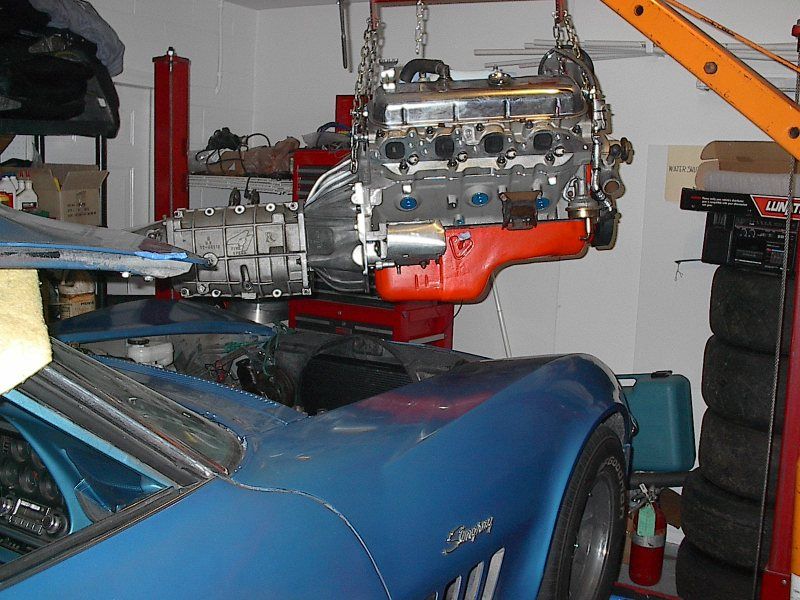
Here's the transmission from the picture. I broke it at a track a few years ago.
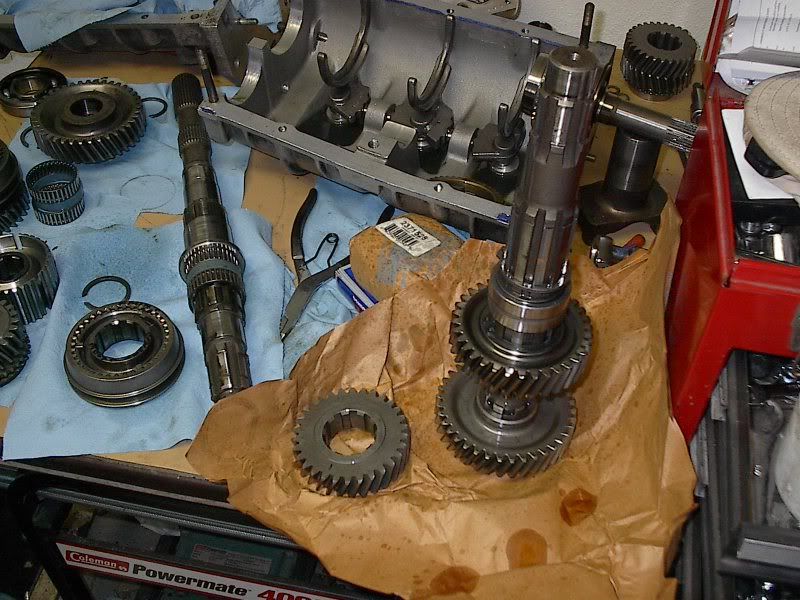
Looks like real world work, doesn't it?
With the exception of the machine work on the blocks I do all my own engine work, and other work including gear box (trans and differentials), fabrication, welding, and painting. So, please keep your "real world" BS to yourself.
Stopping now before this thing times out again.
More real stuff: My aluminum radiator support during a test fit. A few more pounds off the front end.
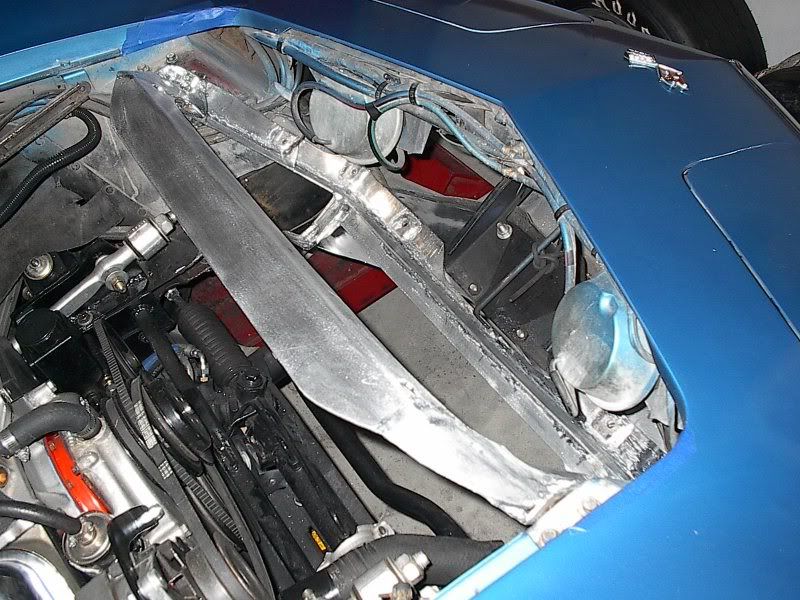
And with a coat of black paint for a stock look:

C4 suspension I put onto my spare frame. Original frame in background, "new" frame in front.
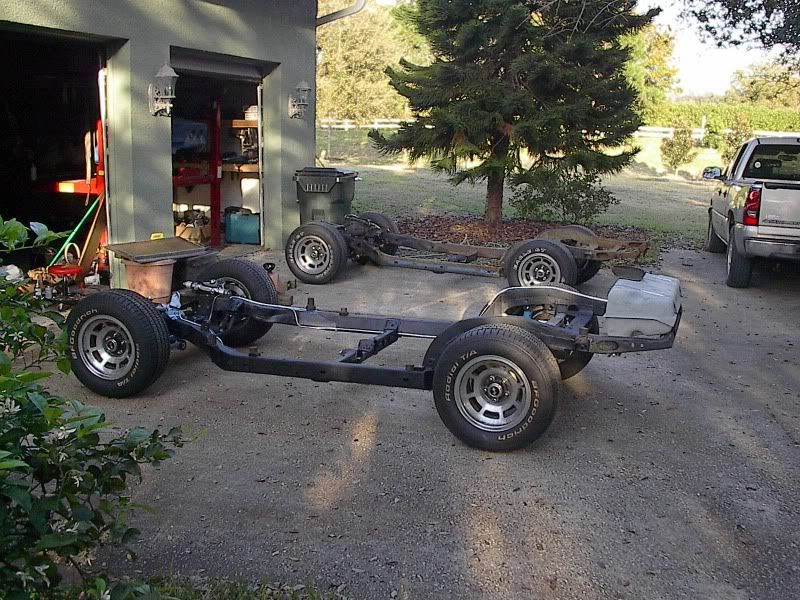
Looks like real work on real cars to me.
Last edited by H P Bushrod; 02-10-2014 at 10:12 AM. Reason: Added more real stuff.
#58
Le Mans Master


69427,
let me say that I appreciate and enjoy the information that you have presented. It has given me a higher level of understanding on the ignition system. The level of knowledge of the systems on these cars is up to each individual. Some people prefer to have others work on their cars and some like to know every conceivable detail of the car. I fall somewhere in the middle.
It's unfortunate when some folks who fail to grasp concepts choose instead to attempt to bring down those who are trying to elevate others level of understanding, or maybe just presenting a new idea.
Instead of arguing with those folks it's easier to dismiss them, as they are quite sure they know everything they need to or will ever need to know.
Because they can't understand a concept they are pretty sure no one else can either. So rather than loose face in their eyes, it's easier to drag others down to their level.
Edit:
Last sentence was not necessary so I deleted it.
What I'm trying to get at is that 69427 does not need to defend himself. He presented information and backed it up with reference to his experience in the related field.
There is no reason to continually challenge his statements nor his qualifications. Take what you need from the presented info and move on.
If what was presented was not understood and you want to know more then PM him. He offered that to us.
Fewer people are going to offer information if each time they do it is challenged, belittled and called into question.
It's pretty easy to sit behind a keyboard and in relative amonimity behave rudely and with disrespect, so lets not.
How about thanking 69427 for his input and expertise. If you want to know about a specific coil application I'm sure he'd be willing to respond. Like many things a blanket recommendation may not be appropriate here.
Even so the information that was given can give you a better idea as to what to look for vs what the manufacturers prefer to focus on.
let me say that I appreciate and enjoy the information that you have presented. It has given me a higher level of understanding on the ignition system. The level of knowledge of the systems on these cars is up to each individual. Some people prefer to have others work on their cars and some like to know every conceivable detail of the car. I fall somewhere in the middle.
It's unfortunate when some folks who fail to grasp concepts choose instead to attempt to bring down those who are trying to elevate others level of understanding, or maybe just presenting a new idea.
Instead of arguing with those folks it's easier to dismiss them, as they are quite sure they know everything they need to or will ever need to know.
Because they can't understand a concept they are pretty sure no one else can either. So rather than loose face in their eyes, it's easier to drag others down to their level.
Edit:
Last sentence was not necessary so I deleted it.
What I'm trying to get at is that 69427 does not need to defend himself. He presented information and backed it up with reference to his experience in the related field.
There is no reason to continually challenge his statements nor his qualifications. Take what you need from the presented info and move on.
If what was presented was not understood and you want to know more then PM him. He offered that to us.
Fewer people are going to offer information if each time they do it is challenged, belittled and called into question.
It's pretty easy to sit behind a keyboard and in relative amonimity behave rudely and with disrespect, so lets not.
How about thanking 69427 for his input and expertise. If you want to know about a specific coil application I'm sure he'd be willing to respond. Like many things a blanket recommendation may not be appropriate here.
Even so the information that was given can give you a better idea as to what to look for vs what the manufacturers prefer to focus on.
Last edited by REELAV8R; 02-08-2014 at 12:59 PM.
The following users liked this post:
John Vance (02-13-2022)
#59
Tech Contributor
Thread Starter
Member Since: Jun 2004
Location: I tend to be leery of any guy who doesn't own a chainsaw or a handgun.
Posts: 18,355
Received 768 Likes
on
550 Posts

Just a side post about the system in my car. It's a combination of stuff that has worked well for me for several years. Some background:
When I first got this car in my teens I noticed that I couldn't get any plug life out of it. It was a box stock 390 horse L-36, with the exception of a Holley spreadbore carb on it that the the PO had installed. I never bothered to ask him why the change. The biggest reason I didn't was probably my unfamiliarity of the details of this car, and I had no idea that the carb had been swapped. Anyway, I was pulling and cleaning the plugs more often that I cared to do. In hindsight I wondered if the carb was jetted too rich, but all things considered it got quite acceptable fuel mileage. Perhaps I had the wrong heat range plugs, but that was a bit too detailed for my teenage brain at the time. Regardless, I saw a presentation in a hot rod magazine about a new electronic ignition conversion setup (this was pre-HEI days) for GM distributors. It was a VR (variable reluctance) sensor and reluctor wheel for the distributor, and a potted up PCB module that was mounted externally. Here's an old picture of the distributor.
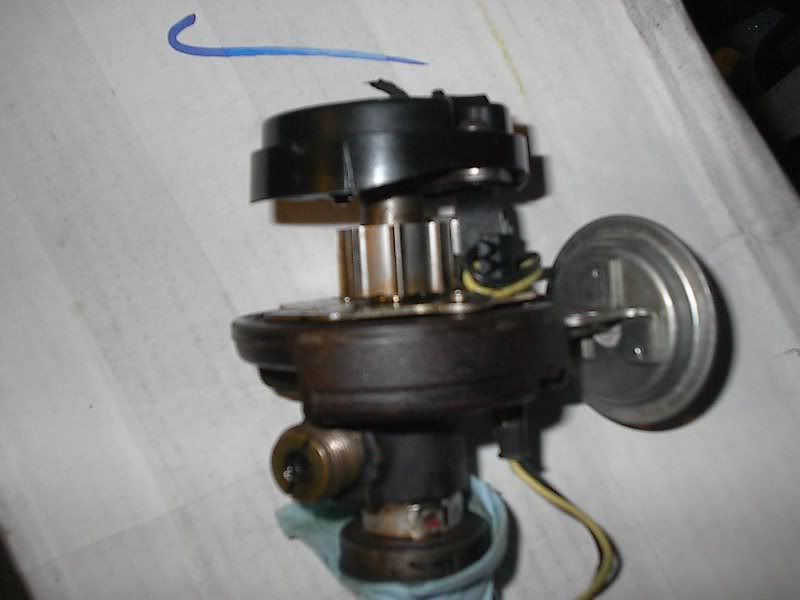
In this fuzzy picture you can see the reluctor wheel and the VR pickup coil. The wheel is (obviously) an eight tooth wheel, which presses on over the points cam, and the pickup coil attaches to the breaker plate in place of the points. (I don't have a picture of the external module, as it took a crap a few years after installation and it's in a landfill somewhere.)
The system worked quite well for several years, but then it started to misfire at higher RPMs under load (personal evidence that electronic ignitions are not always "either working or dead"). I took the system into work one day and hooked everything up on the bench and spun up the RPM. Sure enough the system was breaking up. It looked like the output (switching) transistor was breaking down at higher coil voltages. As the module was all potted up I couldn't debug the circuit board further to repair things, so it went into the trash can. During this testing I noticed that the VR sensor generated an output signal almost identically to that of an HEI distributor (HEI had been in production for several years when I had this problem with the aftermarket system). I thought, what the heck, could I use an inexpensive, readily available HEI module to replace the faulty ignition box? I hooked up a four-terminal HEI module into the system and it worked quite well.
I made up a small harness and installed the HEI module under the distributor shielding. This module looks different than a typical HEI module, but it's the same guts, just in a custom housing for an international customer.
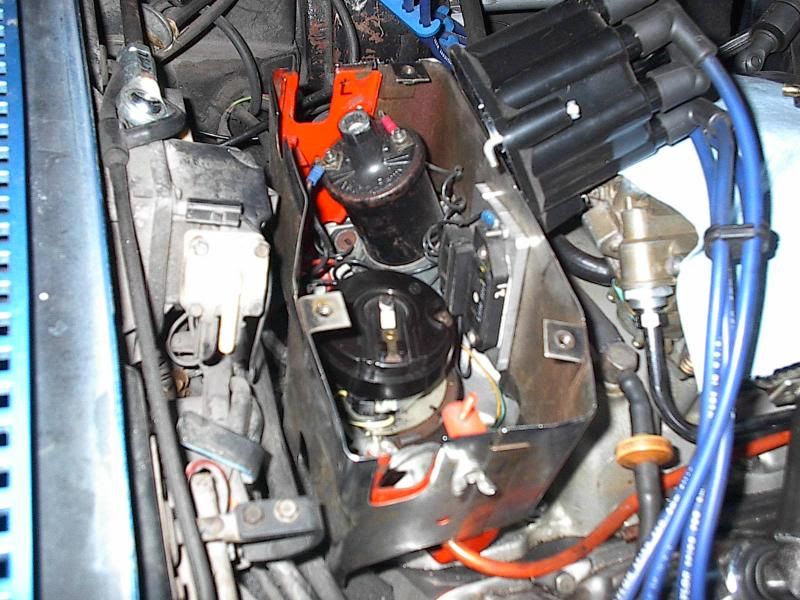
The module is mounted on a modest heat sink. The output transistor stays in saturation mode most of the dwell time so there's minimal wattage/heating of the module. Similarly to a production HEI system I ran a low resistance feed wire to the C+ side of the coil. As I mentioned in an earlier post, coils will operate quite well without a ballast resistor. The coil doesn't care if the system is 6v, 12v, or even 24v. As long as the peak current is controlled then it's happy. I've run the stock coil in this configuration for a couple decades, and several thousand track miles, with complete reliability. As the three engines I've had in this car are big blocks, hyper levels of RPM are not reached, but this system has run well at the rare times when I've run it up to 6200-6500 in the short straights rather than upshift. I don't do this often as it's just unnecessary wear on the engine.
This spring I'm planning on doing some tweaks and tests on the system. With this latest engine I believe I can (should) run a bit more low RPM advance to help out the idle quality and fuel mileage. Also, I've accumulated a few more ignition coils that I'd like to measure their charge time (dwell) requirements and energy levels, just out of curiosity and possible use in the car. I gave away my Sun distributor machine to a friend a few years ago when I moved across the country, but I moved back somewhat close recently and he was kind enough to allow me to have it back. Once I get done with the current project (changing the front suspension roll center and camber curve) I'll wipe the dust off the machine and do some distributor work.
Posted to prevent time out. More to follow.
When I first got this car in my teens I noticed that I couldn't get any plug life out of it. It was a box stock 390 horse L-36, with the exception of a Holley spreadbore carb on it that the the PO had installed. I never bothered to ask him why the change. The biggest reason I didn't was probably my unfamiliarity of the details of this car, and I had no idea that the carb had been swapped. Anyway, I was pulling and cleaning the plugs more often that I cared to do. In hindsight I wondered if the carb was jetted too rich, but all things considered it got quite acceptable fuel mileage. Perhaps I had the wrong heat range plugs, but that was a bit too detailed for my teenage brain at the time. Regardless, I saw a presentation in a hot rod magazine about a new electronic ignition conversion setup (this was pre-HEI days) for GM distributors. It was a VR (variable reluctance) sensor and reluctor wheel for the distributor, and a potted up PCB module that was mounted externally. Here's an old picture of the distributor.

In this fuzzy picture you can see the reluctor wheel and the VR pickup coil. The wheel is (obviously) an eight tooth wheel, which presses on over the points cam, and the pickup coil attaches to the breaker plate in place of the points. (I don't have a picture of the external module, as it took a crap a few years after installation and it's in a landfill somewhere.)
The system worked quite well for several years, but then it started to misfire at higher RPMs under load (personal evidence that electronic ignitions are not always "either working or dead"). I took the system into work one day and hooked everything up on the bench and spun up the RPM. Sure enough the system was breaking up. It looked like the output (switching) transistor was breaking down at higher coil voltages. As the module was all potted up I couldn't debug the circuit board further to repair things, so it went into the trash can. During this testing I noticed that the VR sensor generated an output signal almost identically to that of an HEI distributor (HEI had been in production for several years when I had this problem with the aftermarket system). I thought, what the heck, could I use an inexpensive, readily available HEI module to replace the faulty ignition box? I hooked up a four-terminal HEI module into the system and it worked quite well.
I made up a small harness and installed the HEI module under the distributor shielding. This module looks different than a typical HEI module, but it's the same guts, just in a custom housing for an international customer.

The module is mounted on a modest heat sink. The output transistor stays in saturation mode most of the dwell time so there's minimal wattage/heating of the module. Similarly to a production HEI system I ran a low resistance feed wire to the C+ side of the coil. As I mentioned in an earlier post, coils will operate quite well without a ballast resistor. The coil doesn't care if the system is 6v, 12v, or even 24v. As long as the peak current is controlled then it's happy. I've run the stock coil in this configuration for a couple decades, and several thousand track miles, with complete reliability. As the three engines I've had in this car are big blocks, hyper levels of RPM are not reached, but this system has run well at the rare times when I've run it up to 6200-6500 in the short straights rather than upshift. I don't do this often as it's just unnecessary wear on the engine.
This spring I'm planning on doing some tweaks and tests on the system. With this latest engine I believe I can (should) run a bit more low RPM advance to help out the idle quality and fuel mileage. Also, I've accumulated a few more ignition coils that I'd like to measure their charge time (dwell) requirements and energy levels, just out of curiosity and possible use in the car. I gave away my Sun distributor machine to a friend a few years ago when I moved across the country, but I moved back somewhat close recently and he was kind enough to allow me to have it back. Once I get done with the current project (changing the front suspension roll center and camber curve) I'll wipe the dust off the machine and do some distributor work.
Posted to prevent time out. More to follow.
Last edited by 69427; 02-09-2014 at 10:22 PM. Reason: Added content each time.
#60
Moderator

Member Since: Jun 2002
Location: Maryville Tn
Posts: 46,071
Received 109 Likes
on
84 Posts
CI 5-6-7-8-9-10-11-12 Veteran
St. Jude Donor '09-'10-'11-12-'13-'14-'15-'16-'17-‘18-'19-'20-'21-'22-'23
NCM Sinkhole Donor


 Attack ideas, not each other gentlemen. Everyone here has something to bring to the table. Learn what to eat and what to leave on the plate. Agree to disagree and press on. The bickering back and forth won't be tolerated. Take the bitch sessions to PM's or be gone.
Attack ideas, not each other gentlemen. Everyone here has something to bring to the table. Learn what to eat and what to leave on the plate. Agree to disagree and press on. The bickering back and forth won't be tolerated. Take the bitch sessions to PM's or be gone.
The following users liked this post:
wroughtiron65 (10-24-2020)




